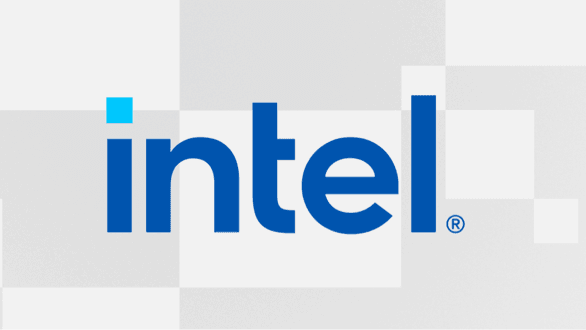Evaluation of the Performance and Programmability of Intel’s Gaudi NPU for AI Model Serving
Array
(
[content] =>
[params] => Array
(
[0] => /forum/threads/research-paper-debunking-the-cuda-myth-towards-gpu-based-ai-systems.21786/
)
[addOns] => Array
(
[DL6/MLTP] => 13
[Hampel/TimeZoneDebug] => 1000070
[SV/ChangePostDate] => 2010200
[SemiWiki/Newsletter] => 1000010
[SemiWiki/WPMenu] => 1000010
[SemiWiki/XPressExtend] => 1000010
[ThemeHouse/XLink] => 1000970
[ThemeHouse/XPress] => 1010570
[XF] => 2021770
[XFI] => 1050270
)
[wordpress] => /var/www/html
)
Guests have limited access.
Join our community today!
Join our community today!
You are currently viewing SemiWiki as a guest which gives you limited access to the site. To view blog comments and experience other SemiWiki features you must be a registered member. Registration is fast, simple, and absolutely free so please, join our community today!
You are using an out of date browser. It may not display this or other websites correctly.
You should upgrade or use an alternative browser.
You should upgrade or use an alternative browser.
Research paper: Debunking the CUDA Myth Towards GPU-based AI Systems
- Thread starter XYang2023
- Start date
IMakeICsAtHomeJK
New member
Energy efficiency sounds nice, but " . . . notable areas for improvement in terms of software maturity." sounds like a death sentence for serious consideration by companies and their developers. Also, "software maturity" singularly encompasses so much of what is meant behind the sentiment of 'usability'. So much so, that the term "software maturity" is often enough the sole metric used in the course of tool-acquisition.Results indicate that Gaudi-2 achieves
energy efficiency comparable to A100, though there are notable
areas for improvement in terms of software maturity. (Lee, Lim, Bang, et al; 2024)
Based on what I heard, Gaudi Next (whatever) and Falcon Shores will both support oneAPI.Energy efficiency sounds nice, but " . . . notable areas for improvement in terms of software maturity." sounds like a death sentence for serious consideration by companies and their developers. Also, "software maturity" singularly encompasses so much of what is meant behind the sentiment of 'usability'. So much so, that the term "software maturity" is often enough the sole metric used in the course of tool-acquisition.
View attachment 2636
Here is my recent testing of the Intel ARC GPU:
I’m going question the continued focus solely on CUDA model running parity, especially for inference. CUDA is just one piece (crucial of course) at the bottom of the inference system software stack. And this doesn’t even include the cluster management and optimization added with the Run:AI deal. Of course, the criteria are different if you are doing research vs. putting deploying production GenAI systems.


 www.nextplatform.com
www.nextplatform.com

Nvidia Rolls Out Blueprints For The Next Wave Of Generative AI
Hardware is always the star of Nvidia’s GPU Technology Conference, and this year we got previews of “Blackwell” datacenter GPUs, the cornerstone of a 2025
 www.nextplatform.com
www.nextplatform.com
hist78
Well-known member
Evaluation of the Performance and Programmability of Intel’s Gaudi NPU for AI Model Serving
Has this research paper been published by any peer-reviewed journal?
I think the most difficult part is CUDA, but other companies are catching up. Intel is leading the UXL/oneAPI efforts:I’m going question the continued focus solely on CUDA model running parity, especially for inference. CUDA is just one piece (crucial of course) at the bottom of the inference system software stack. And this doesn’t even include the cluster management and optimization added with the Run:AI deal. Of course, the criteria are different if you are doing research vs. putting deploying production GenAI systems.
View attachment 2637

Nvidia Rolls Out Blueprints For The Next Wave Of Generative AI
Hardware is always the star of Nvidia’s GPU Technology Conference, and this year we got previews of “Blackwell” datacenter GPUs, the cornerstone of a 2025www.nextplatform.com
UXL Foundation: Unified Acceleration
Then there’s the Ultra Accelerator:

Digging Into The Ultra Accelerator Link Consortium
The newly formed UALink Consortium brings together major tech companies to address the vital technical challenge of GPU-to-GPU connectivity in datacenters.
 www.forbes.com
www.forbes.com
And Ultra Ethernet:

Ultra Ethernet Consortium
Delivering an Ethernet based open, interoperable, high performance, full-communications stack architecture to meet the growing network demands of AI & HPC at scale.
Intel also has deep experience in:
* Networking/IPUs/FPGAs
* Silicon photonics/Ayar Labs
* Cloud management/Tiber Cloud/CSP customers
* Liquid and immersive cooling technologies
The Gaudi architecture can be scaled into large clusters:

Intel® Gaudi® 3 AI Accelerator White Paper
This technical paper introduces the next-generation AI accelerator from Intel: the Intel® Gaudi® 3 AI accelerator. The paper provides technical and performance information regarding the new accelerator, including: overview, hardware system, architecture, host interface, compute, software suite...
Similar to Nvidia's latest GPUs, the upcoming Falcon Shores can reach up to 1500W of power consumption:

AI Power Consumption: Rapidly Becoming Mission-Critical
Generative AI and rising GPU shipments is pushing data centers to scale to 100,000-plus accelerators, putting emphasis on power as a mission-critical problem to solve.
 www.forbes.com
www.forbes.com
Additionally, Intel generally demonstrates better software engineering capabilities than competitors like AMD. For example:

Open Platform For Enterprise AI
Efficiently integrate secure, performant, and cost-effective Generative AI workflows into business value.
Overall, I believe Intel has the necessary components to compete effectively in this market. However, Intel should focus on unifying its resources and accelerating its market strategy to gain a stronger competitive edge while being discipline in terms of minimizing un-necessary spending.
I need to read the paper in bit more details. I will find a time to do so.Has this research paper been published by any peer-reviewed journal?
hist78
Well-known member
I need to read the paper in bit more details. I will find a time to do so.
My question is not whether you have read it in detail or not. My question concerns the credibility or quality of this research paper. As far as I can tell, this article hasn't been published in any peer-reviewed publications. Why they chose this route or avoided doing so is an important question.
siliconbruh999
Well-known member
Yeah need someone to peer review it the quality is nice I haven't read the full analysis is nice but they can pull some tricks
